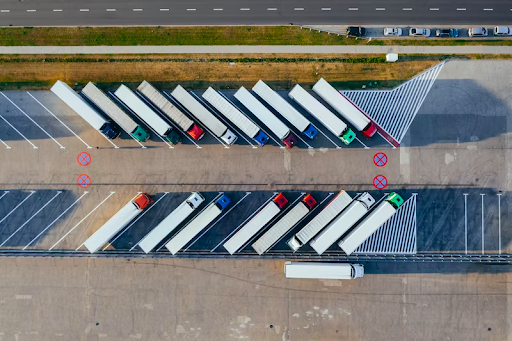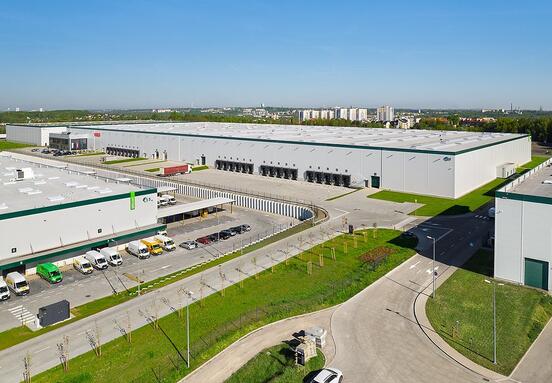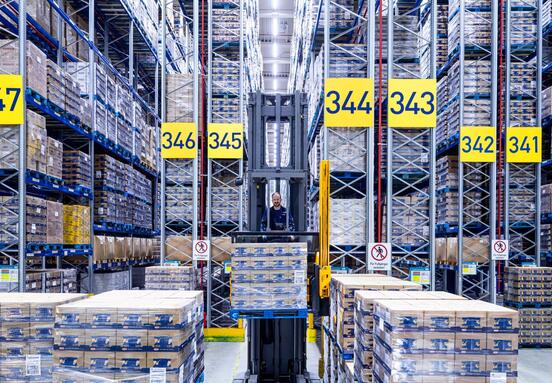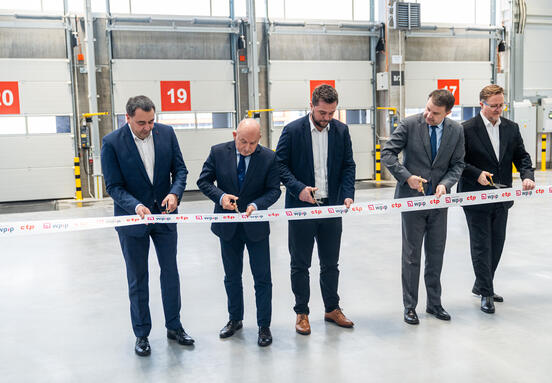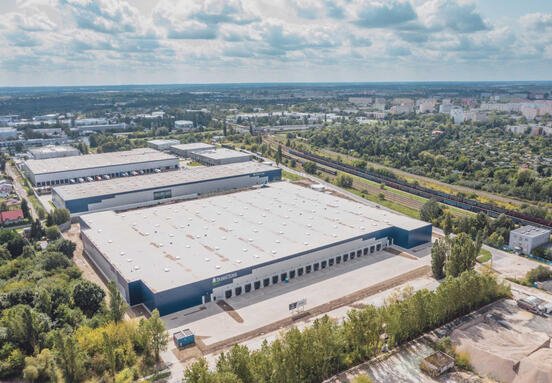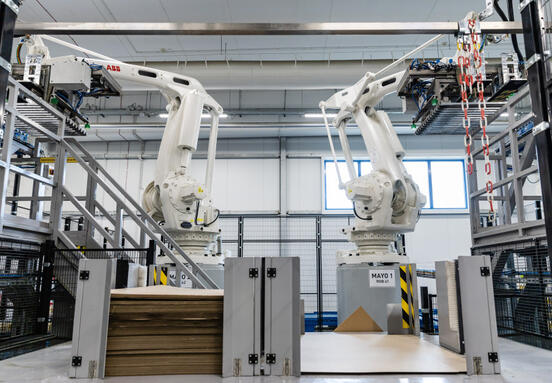Energy-efficient lighting
Replacing traditional warehouse lighting with LED lighting is the first step to reducing your carbon footprint. LED lighting consumes up to 80% less energy and has a significantly longer lifespan. With proper installation and selection of control systems, we can further benefit from the flexibility of lighting, adapting it to the needs of employees and current logistics requirements. This not only reduces CO2 emissions, but also reduces costs.
Smart Building Technologies
Technological innovations are also reaching the warehouse sector. Smart building management systems (BMS) can optimize energy consumption by regulating parameters such as lighting, heating and ventilation. The BMS can adjust these parameters according to the current need, eliminating wasted energy. With the possibilities offered by sensors and the Internet of Things, controlling energy consumption becomes simple and efficient.
Photovoltaic installations
Photovoltaic panels on a warehouse roof can provide clean, renewable energy to power a building. While the initial cost of installation can be high, the investment pays for itself quickly, reducing energy bills and CO2 emissions. In some places, it is even possible to sell excess energy produced back to the grid, making the investment even more worthwhile.
Recycling systems
Advanced waste sorting systems can dramatically reduce the amount of waste going to landfill. In addition, some companies are investing in technologies that can convert storage waste into energy. The use of such a solution can not only contribute to environmental protection but also to company profits.
Logistics and transportation optimization
Logistics is a key part of the warehouse process, which often generates significant amounts of CO2 emissions. With the help of advanced fleet management and route optimization systems, companies can reduce fuel consumption and emissions. Technologies such as electric or hybrid vehicles are also available that can further reduce CO2 emissions.
Energy storage
An equally important part of a strategy to reduce a warehouse's carbon footprint is energy storage. Modern energy storage systems, such as lithium-ion batteries, can store energy produced by photovoltaic panels or other renewable energy and deliver it when it is needed, reducing energy consumption from the grid.
Putting sustainable strategies into practice
Implementing all these strategies requires thoughtful planning and investment. However, many companies can take advantage of available subsidy programs for sustainability-related investments. In addition, companies that choose to make such investments can reap benefits such as operating cost savings and an image as a company that promotes sustainability.
Applying innovative technologies and strategies to a warehouse can significantly reduce a company's carbon footprint. By investing in energy-efficient lighting, Smart Building systems, photovoltaic installations, recycling systems, transportation optimization, and energy storage, your company can operate more sustainably, contributing to environmental protection.
